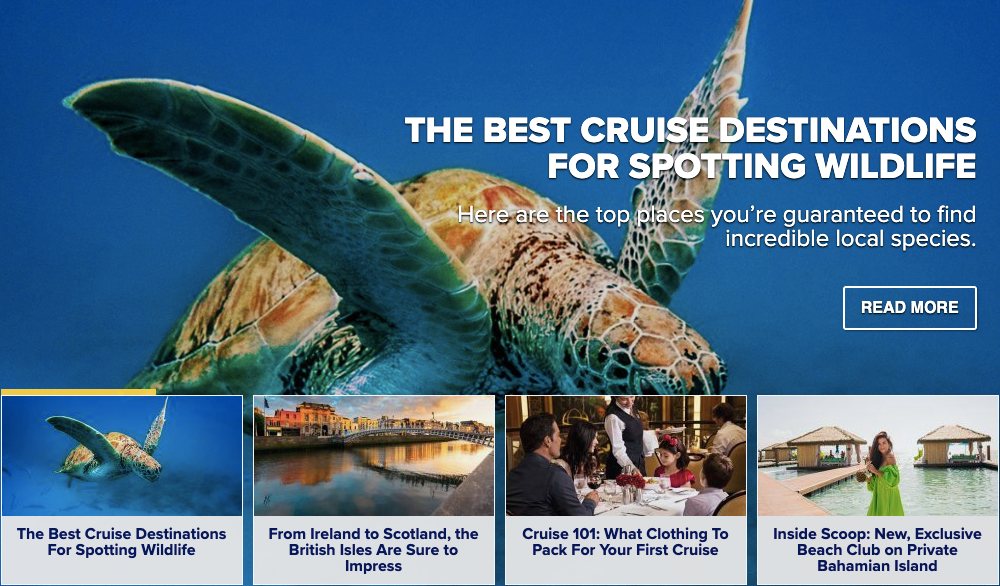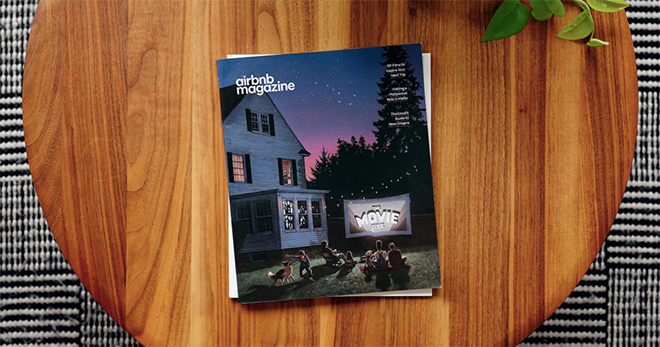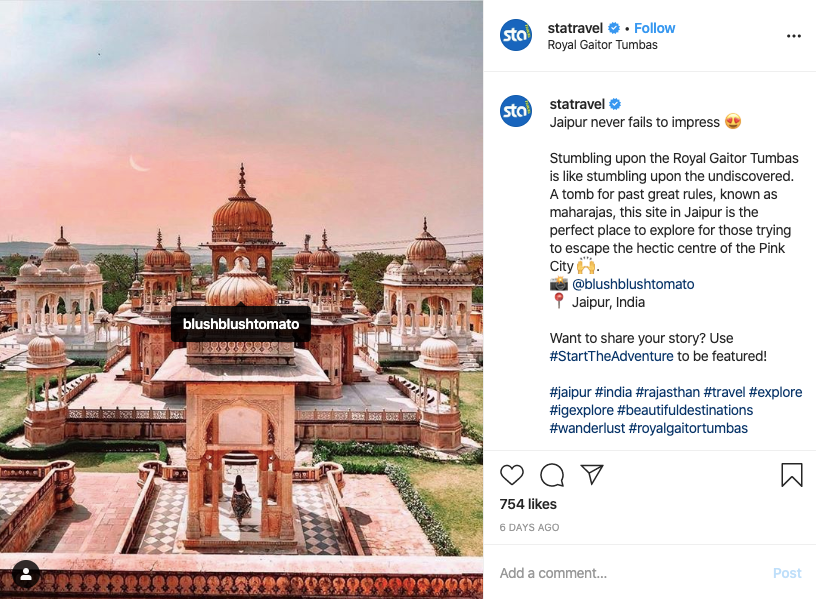
Content Marketing Tips to Help Hospitality Companies Stay Top of Mind During Slowdowns
Content Marketing Tips to Help Hospitality Companies Stay Top of Mind During Slowdowns
Alyssa Patzius, Vice President of Sales • Intero Digital • March 18, 2020
The hospitality industry can fall victim to so many outside forces that reduce business. Whether you’re a hotel booking software company, an online marketplace for lodging accommodations, a luxury cruise company, or anything in between, you’ve most likely been on the receiving end of reduced business due to a number of outside factors.
For one, matters of public health can play a role in reduced business for hospitality companies. For example, when the coronavirus outbreak started spreading in the U.S., several multinational companies began restricting non-essential travel for employees, and prominent events like SXSW were canceled. Demand for travel is expected to decrease by 5% in North America through 2020, and Booking Holdings (which owns multiple online travel services) expects its revenue to fall as much as 7% in Q2 of 2020 compared to the same time in 2019.
While these numbers and the news cycle can be disconcerting, the travel and hospitality industry is hopeful for a turnaround: “A lot of people have worked hard for a vacation,” John Lovell, president of leisure travel for Travel Leaders Group, said. “So, yes, we’re seeing cancellations — but at the same time, people who are calling to cancel are looking for other options because they still do want to travel.”
Seasonal considerations and the weather can also affect business. For many travel destinations, summer is the most popular time to visit. In the summer of 2019, 257.4 million people were expected to fly on U.S. carriers from June through August. That’s about 2.8 million travelers per day. But off seasons can see much lower numbers.
Regardless of what causes a slowdown in the hospitality industry, hospitality companies can tap into content marketing to continue to engage with their audiences and stay top of mind in the “in between” until travelers are ready to book their next trip.
Lorem ipsum dolor sit amet, conse ctetuer adipiscing elit, sed diam nonum nibhie euismod. Facilisis at vero eros et . Lorem ipsum dolor sit amet, consectetur adipisicing elit, sed do eiusmod tempor incididunt ut labore et dolore magna liqua. Ut enim ad minim veniam quis nostrud exercitation ullamco laboris nisi ut aliquip ex ea commodo consequat. Lorem ipsum dolor sit amet, conse ctetuer adipiscing elit, sed diam nonum nibhie euismod. Facilisis at vero eros et . Lorem ipsum dolor sit amet, consectetur adipisicing elit, sed do eiusmod tem.
Staying Top of Mind With Content Marketing
Maintaining a meaningful connection with customers is essential for hospitality companies, especially during travel slowdowns. That’s why it’s important to focus more on brand awareness than lead generation during seasons of reduced travel. After all, if you’re only marketing to people who want to travel now and ignore the wealth of people who are postponing travel, you risk losing mind share. And as a result, when those people are ready to travel in the future, your company might not be top of mind as a reputable, trustworthy resource.
Content marketing is a great way to have regular touchpoints with your audience and maintain an engaged relationship. Whether you tackle content marketing in-house or outsource to a content partner, here are some ways hospitality companies can keep their audiences engaged during downturns and stay top of mind for when travel picks up again:
1. Blogging
Over three-quarters of internet users read blogs or have at least subscribed to a few, and marketers who prioritize blogging are 13 times more likely to realize a positive return on their investment. So it’s clearly a worthwhile strategy. Just make sure your blog content has your target audience in mind.
For example, if you’re a business hotel that hosts a lot of conferences or meetings, maybe you could write some content on conference best practices — or even ways to make virtual meetings and conferences engaging and effective during times when travel has slowed due to illness. Or if you’re a company that helps people coordinate lodging, perhaps you can offer decor advice to help people make their homes feel like a getaway.
Royal Caribbean has a blog that’s chock-full of helpful content. From packing tips to the world’s best cruise locations for viewing wildlife, travelers have a wealth of content to engage with to continually learn more about travel. Even if travelers aren’t ready to travel now, they’ll be able to gather ideas and tips to help them make the most of their next trip when the time comes.
Lorem ipsum dolor sit amet, conse ctetuer adipiscing elit, sed diam nonum nibhie euismod. Facilisis at vero eros et . Lorem ipsum dolor sit amet, consectetur adipisicing elit, sed do eiusmod tempor incididunt ut labore et dolore magna liqua. Ut enim ad minim veniam quis nostrud exercitation ullamco laboris nisi ut aliquip ex ea commodo consequat. Duis aute irure dolor in reprehenderit in voluptate velit esse cillum dolore eu fugiat nulla pariatur. Excepteur sint occaecat cupidatat non proident, sunt in culpa qui officia deserunt mollit anim id est laborum. Sed ut perspiciatis unde omnis iste natus error sit voluptatem accusantium doloremque laudantium, totam rem aperiam, eaque ipsa quae ab illo inventore veritatis et quasi dolor in reprehenderit in voluptate velit esse cillum dolore eu fugiat nulla pariatur. Excepteur sint occaecat cupidatat non, architecto beatae vitae dicta sunt explicabo.
Lorem ipsum dolor sit amet, conse ctetuer adipiscing elit, sed diam nonum nibhie euismod. Facilisis at vero eros et . Lorem ipsum dolor sit amet, consectetur adipisicing elit, sed do eiusmod tempor incididunt ut labore et dolore magna liqua. Ut enim ad minim veniam quis nostrud exercitation ullamco laboris nisi ut aliquip ex ea commodo consequat. Duis aute irure dolor in reprehenderit in voluptate velit esse cillum dolore eu fugiat nulla pariatur. Excepteur sint occaecat cupidatat non proident, sunt in culpa qui officia deserunt mollit anim id est laborum. Sed ut perspiciatis unde omnis iste natus error sit voluptatem accusantium doloremque laudantium, totam rem aperiam, eaque ipsa quae ab illo inventore veritatis et quasi dolor in reprehenderit in voluptate velit esse cillum dolore eu fugiat nulla pariatur. Excepteur sint occaecat cupidatat non, architecto beatae vitae dicta sunt explicabo.

2. Long-Form Content
Creating long-form content and distributing it to your audience gives you the opportunity to engage with potential customers in a creative way while also providing them with educational, helpful information.
Marriott is an example of a hospitality brand tapping into long-form content to reach its audience. Marriott Traveler is a magazine that features destination-based content, providing readers with information on things to do in several cities where Marriott is located. The initial launch of Marriott Traveler covered three cities, and within just a few months, the magazine drove bookings to more than 7,000 rooms.
Airbnb also publishes a beautifully designed magazine. The purpose of the publication is to “celebrate humanity wherever it exists.” Readers can subscribe to the print magazine or engage with Airbnb Magazine content online to read about smart travel tips, hosts and homes, travel itineraries, and more.
Publishing content like this regularly allows your audience to continue learning about travel and dreaming about their next trip — and when that time comes, you’ll be top of mind as a helpful resource.

3. Video
Videos are visually and aurally stimulating and provide the unique opportunity to tell a story. Plus, over 80% of people earning more than $75,000 per year are on YouTube. Many hospitality brands’ target audience falls within that category, so it would be wise to pay attention to this medium.
Marriott has tapped into the power of video content to tell its story and showcase its customer service. Its short films, “Two Bellmen” and “French Kiss,” were featured on the JW Marriott website, on Marriott’s YouTube channel, and on TVs in hotel rooms. Plus, “Two Bellmen” has received more than 5 million views on YouTube alone.

Your videos don’t have to be the on same scale as Marriott’s — just make sure you’re creating video content that your target audience will find valuable. Focus your video strategy on education rather than promotion, especially during times when customers aren’t likely to purchase something. You want to portray yourself as a valuable partner and friend who they can turn to when the time is right for travel.
4. Social Media
Nearly 80% of Americans had a social media profile in 2019, and 70% of people look up brands on Instagram. Plus, 74% of people earning more than $75,000 per year are on Facebook, 49% are on LinkedIn, 41% are on Pinterest, and 42% are on Instagram. It’s safe to say companies in the hospitality industry should be on social media to engage with their target audience.
During slowdowns, hospitality brands should focus on relationship-building on social media rather than strictly selling. On social platforms, users are looking for authentic encounters with their friends, influencers, and brands — and you can provide that.
You can also tap into user-generated content on social media to engage with your audience. Encourage your audience to tag your account in photos or use a special hashtag, and reshare those photos on your account (giving proper credit, of course). Just look at STA Travel. The brand often reposts user-generated content, which encourages engagement and shows its audience members that it values their contributions and experiences.

With so many outside factors influencing the industry, hospitality companies have to approach marketing creatively during slowdowns. Content marketing can help them continuously engage with their audiences and stay top of mind for when business picks up again.

